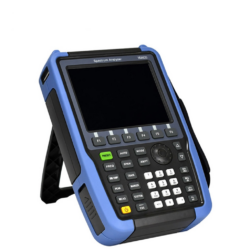The Importance of Inventory Management in Cold Storage Victoria
Inventory management is a critical aspect of any business, but it takes on a particularly vital role in the context of cold storage facilities in Victoria, Australia. This article will explore the significance of inventory management in the cold storage industry, focusing on why it is essential, the challenges it presents and best practices to ensure efficient and effective management.
Why Inventory Management Matters?
Cold storage facilities, which maintain low temperatures to store perishable goods, play a crucial role in the food supply chain. From fresh produce to frozen meat and dairy products, these facilities are responsible for preserving products’ quality and safety. Effective inventory management in this sector is paramount for several reasons:
Maintaining Product Quality
Cold storage Victoria is all about preserving the quality of perishable products. Proper inventory management ensures that products are stored at the correct temperature, preventing spoilage and maintaining freshness. It helps avoid temperature fluctuations and ensures the integrity of the cold chain.
Minimizing Losses
One of the most significant challenges in cold storage is product spoilage and waste. Efficient inventory management helps minimize losses by ensuring products are rotated on a first-in, first-out (FIFO) basis, reducing the chances of items expiring or becoming unsellable.
Meeting Regulatory Requirements
The food industry is heavily regulated, and cold storage facilities must comply with strict standards to ensure food safety. Proper inventory management helps facilities meet these requirements, ensuring products are stored correctly, labelled accurately, and tracked diligently.
Optimizing Space and Resources
Cold storage space is expensive to maintain. Effective inventory management helps maximize the use of available space by ensuring that products are stored efficiently, reducing the need for excess capacity. This optimization can result in significant cost savings.
Enhancing Customer Satisfaction
In today’s competitive market, customer satisfaction is paramount. Efficient inventory management ensures that products are readily available when needed, reducing the risk of stockouts and ensuring timely deliveries to customers. Happy customers are more likely to become repeat customers.
Challenges in Cold Storage Inventory Management
Managing inventory in a cold storage facility comes with its own set of unique challenges:
Temperature Control
Maintaining consistent, low temperatures is essential for product quality. Inventory management systems must ensure that products are stored at the correct temperature at all times, which can be challenging in large facilities with numerous storage units.
Inventory Accuracy
Cold storage facilities often deal with a vast number of SKU (Stock Keeping Unit) variations. Ensuring the accuracy of inventory counts is crucial to prevent overstocking or stockouts, which can lead to significant financial losses.
Shelf-Life Management
Perishable goods have limited shelf lives. Inventory managers must be vigilant in tracking product expiration dates and ensure that older products are used or sold before newer ones, following the FIFO principle.
Seasonal Variations
The demand for cold storage facilities can vary significantly depending on the season. Inventory managers must anticipate these fluctuations and adjust inventory levels accordingly to avoid excess inventory during off-peak seasons.
Traceability
Traceability is essential in the event of product recalls or quality issues. Inventory management systems must provide a clear and accurate record of the product’s journey through the cold storage facility.
Best Practices for Cold Storage Inventory Management
To address these challenges and ensure efficient inventory management in cold storage facilities, consider implementing the following best practices:
Invest in Robust Inventory Management Software
Utilize specialized inventory management software designed for cold storage facilities. These systems offer real-time tracking, temperature monitoring, and automated reporting, making it easier to manage inventory accurately.
Implement RFID and Barcode Technology
RFID (Radio-Frequency Identification) and barcode technology can streamline inventory tracking. These technologies provide accurate and real-time data, reducing the chances of errors and improving overall efficiency.
Train Staff Effectively
Ensure your staff is well-trained in handling inventory, including proper storage procedures and FIFO principles. Regular training sessions can help keep everyone on the same page and reduce the risk of errors.
Regular Audits and Inspections
Conduct regular audits and inspections to verify the accuracy of your inventory records. It can help identify issues early and prevent costly mistakes.
Optimize Storage Layout
Organize your storage space efficiently to minimize the need for excess capacity. Implement proper racking systems and shelving to make the best use of available space.
Monitor Temperature Continuously
Invest in temperature monitoring systems that provide real-time data. Any deviations from the required temperature range should trigger immediate alerts, allowing for swift corrective action.
Implement a FIFO System
Prioritize the use of products based on their shelf life by implementing a FIFO system. Ensure that older products are used or shipped out before newer ones to reduce waste.
Regularly Review and Adjust Inventory Levels
Monitor demand patterns and adjust inventory levels accordingly. This proactive approach helps prevent overstocking or stockouts and optimizes storage space.
Ensure Proper Documentation
Maintain accurate records of all inventory transactions, including receipt, storage, and distribution. This documentation is crucial for traceability and compliance with regulatory requirements.
Conclusion
Inventory management is a critical component of the cold storage industry in Victoria, Australia. Properly managed inventory not only ensures the preservation of product quality and safety but also minimizes losses, enhances customer satisfaction, and optimizes resource utilization. Despite the unique challenges that come with managing inventory in a cold storage facility, the implementation of best practices, including robust software solutions and effective training, can help overcome these obstacles.
In a world where the demand for perishable goods continues to rise, efficient inventory management in cold storage facilities is more important than ever. By embracing modern technology and adhering to industry best practices, businesses can ensure that their cold storage Melbourne operations run smoothly, ultimately benefiting both their bottom line and the consumers they serve.






















































